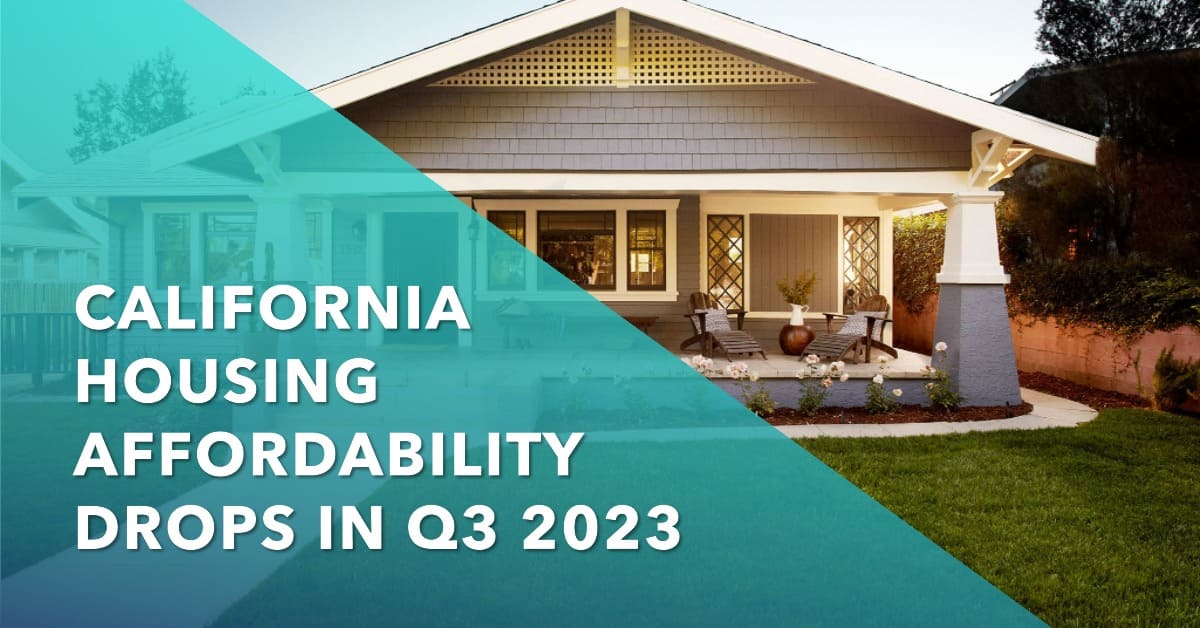A recent report by ATTOM, a leading real estate data provider, has shed light on the varying vulnerabilities of housing markets across the United States. The Special Housing Risk Report spotlights counties more susceptible to potential decline, based on factors like affordability, underwater mortgages, and unemployment rates. The data, gathered in the first quarter of 2024, reveals a concerning trend – California, New Jersey, and Illinois continue to hold the highest concentrations of at-risk markets.
Housing Market Slowdown Risk Persists in California, New Jersey and Illinois
This isn't entirely new information. Over the past few years, these same states have consistently shown up on the “most vulnerable” side of the housing market spectrum. The latest report reinforces this trend, highlighting a geographic concentration of risk, particularly in areas surrounding major metropolitan areas like Chicago and New York City, as well as inland regions of California.
In contrast, the report identifies a different story playing out in the South and Midwest, where a significant portion of the 50 counties considered least vulnerable are located. This suggests a regional divide in terms of housing market resilience.
The report emphasizes that these findings shouldn't be interpreted as a prediction of imminent decline in any specific market. Instead, they serve as an indicator of relative vulnerability based on key metrics. With the housing market experiencing a slowdown over the past year, the report highlights how some areas are inherently better positioned to weather a potential downturn compared to others.
Let's now delve deeper into the specific factors considered in the risk assessment and how they contribute to the overall vulnerability score.
Decoding the Vulnerability Score
The ATTOM report utilizes a multi-pronged approach to assess the vulnerability of housing markets across different counties. This section explores the four key factors that contribute to the overall risk score:
- Foreclosure Risk: This metric evaluates the percentage of homes in a county facing potential foreclosure. A higher percentage indicates a more vulnerable market, as foreclosures can destabilize property values and inject uncertainty into the market.
- Underwater Mortgages: This factor examines the proportion of homes with mortgages exceeding the estimated value of the property. These “underwater” mortgages can limit homeowners' financial flexibility and disincentivize selling, potentially leading to a stagnant market.
- Housing Affordability: This metric dives into the financial burden of homeownership in a particular county. It considers the percentage of an average local wage required to cover major expenses associated with owning a median-priced single-family home. A higher percentage indicates lower affordability, making it harder for potential buyers to enter the market and potentially leading to a decrease in demand.
- Unemployment Rates: Local unemployment data is factored into the analysis because job losses can significantly impact a household's ability to afford mortgage payments. Higher unemployment rates can lead to an increase in foreclosures and put downward pressure on housing prices.
By analyzing these four crucial aspects, the report assigns a vulnerability ranking to each county. Counties with a higher ranking in each category (indicating a greater risk in that specific factor) contribute to a higher overall vulnerability score. This score allows researchers and potential homebuyers to compare the relative risk profiles of different housing markets.
The report emphasizes that the data is derived from the first quarter of 2024. Real estate markets are dynamic and constantly evolving. However, understanding these vulnerability factors can provide valuable insights for those navigating the current housing landscape, particularly in areas identified as potentially more susceptible to downturns.
Let's now explore the specific counties flagged as most vulnerable and analyze the potential reasons behind their risk profile.
A Closer Look at Vulnerable Counties
The report identifies 50 counties across the United States considered most susceptible to housing market downturns. As discussed earlier, California, New Jersey, and Illinois dominate this list, with a concentration in areas surrounding major metropolitan hubs like Chicago and New York City, along with inland regions of California.
Here's a breakdown of some of the notable counties and potential contributing factors to their vulnerability:
- Chicago Metro Area (Illinois): Counties like DeKalb, Kane, Kendall, McHenry, and Will in Illinois consistently rank high in terms of risk. These areas might face challenges like high unemployment rates or a larger share of underwater mortgages, making them more susceptible to price fluctuations.
- New York City Metro Area (New Jersey): Essex, Passaic, Sussex, and Union counties in New Jersey share close proximity to the expensive New York City market. While offering a potentially more affordable option for some buyers, these areas might also experience a spillover effect if the New York City market faces a downturn.
- California's Central Valley: Fresno, Kern, Kings, Madera, Merced, San Joaquin, Stanislaus, and Tulare counties in California's central valley find themselves on the vulnerable list. These regions might grapple with affordability issues due to a larger gap between average wages and housing costs.
It's important to remember that the report provides a general risk assessment and doesn't paint the entire picture for each county. Specific neighborhoods within these counties might exhibit different levels of vulnerability. Local factors like economic conditions, job markets, and recent housing trends can also play a role.
However, the ATTOM report serves as a valuable starting point for further research. Potential homebuyers or real estate investors in these areas might want to conduct a more localized analysis, considering factors like specific neighborhoods, property types, and recent market trends. This deeper dive can help them make informed decisions tailored to their individual situations.
Finally, let's explore some of the counties considered least vulnerable and the potential factors contributing to their resilience.
Pockets of Resilience in a Shifting Market
While the ATTOM report highlights areas of potential vulnerability, it also identifies counties considered to be more resilient in the face of a potential housing market downturn. Interestingly, a significant portion of these counties are located in the South and Midwest regions.
Here's a glimpse into some of the counties considered less vulnerable and possible reasons behind their relative strength:
- Southern States: Virginia, Tennessee, and North Carolina boast several counties on the “least vulnerable” list. These states have generally experienced steadier home price growth compared to the national average and might benefit from a more balanced housing market with a mix of affordable and higher-end options.
- Midwestern Markets: Wisconsin and Minnesota also contribute counties to the resilient category. These areas might have a stronger job market base compared to some of the more vulnerable regions, providing stability for homeownership affordability.
It's important to acknowledge that even these resilient markets aren't entirely immune to potential slowdowns. However, the factors contributing to their lower risk scores suggest a greater capacity to weather market fluctuations.
Bottom Line: The ATTOM Special Housing Risk Report provides valuable insights into the varying vulnerabilities of housing markets across the United States. By analyzing factors like affordability, underwater mortgages, and foreclosure rates, the report identifies areas that might be more susceptible to downturns. This information can be a helpful tool for potential homebuyers and real estate investors, guiding them towards a more informed approach when navigating the current housing landscape.
However, it's crucial to remember that the report offers a broad risk assessment and doesn't replace a thorough analysis of specific localities. Factors like neighborhood dynamics, recent market trends, and local economic conditions can significantly influence the risk profile within a county.
Ultimately, responsible homebuyers and investors should combine the insights from this report with additional research tailored to their specific interests and location. This comprehensive approach can empower them to make informed decisions in a dynamic housing market.
ALSO READ:
- California Housing Market 2024: Trends and Predictions
- Real Estate Forecast Next 5 Years in New Jersey
- Illinois Housing Market Forecast: Will it Crash in 2024?
- California Housing in High Demand: 19 Golden State Cities Sizzle
- New Jersey Housing Market Trends and Forecast for 2024
- New Jersey Stands Out With Highest Foreclosure Rate Last Month










